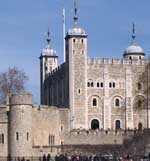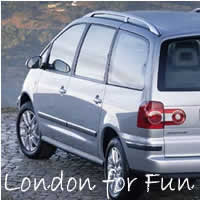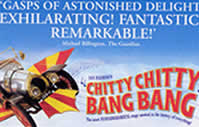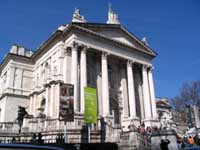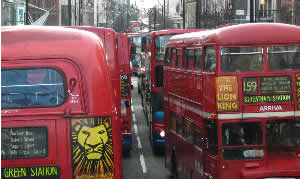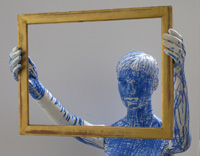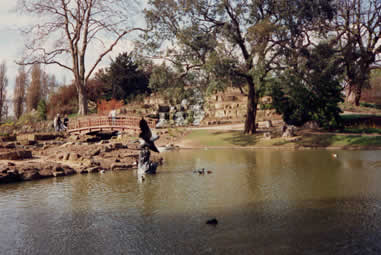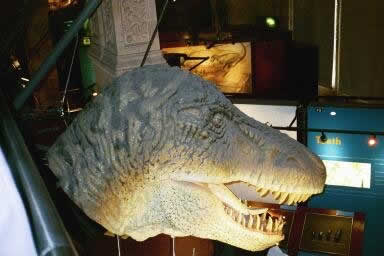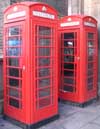Buckingham Palace - Popularly known as "Buck House", has served as the monarch`s permanent London residence only since the accession of Victoria. It began its days in 1702 as the Duke of Buckingham`s city residence, built on the site of a notorious brothel, and was sold by the duke`s son to George III in 1762. The building was overhauled by Nash in the late 1820s for the Prince Regent, and again by Aston Webb in time for George V`s coronation in 1913. It is the largest private house in London - it has more than 660 rooms. The palace is actually back-to-front: the side you look at from the Mall is the back of the building. Hotels near Buckingham Palace
The Buckingham Palace opens its doors to the public each year from July 26th until September 24th. You can see lavishly decorated State Rooms designed by John Nash.
Open daily, 09:45–18:00 (last admission 15:45). Buckingham Palace operates a timed-ticket system, with admission every 15 minutes throughout the day.
Buckingham Palace facts:
1. Buckingham Palace is The Queen's official London residence, but St. James's Palace is the ceremonial Royal residence. Even today foreign ambassadors are formally accredited to 'the Court of St. James's'.
2. Buckingham Palace has 775 rooms. These include 19 State rooms, 52 Royal and guest bedrooms, 188 staff bedrooms, 92 offices and 78 bathrooms.
3. Vital statistics: Buckingham Palace is 108 metres long across the front, 120 metres deep (including the quadrangle) and 24 metres high. The total floor area of the Palace, from basement to roof, covers over 77,000 square metres.
4. The site where Buckingham Palace now stands was originally a mulberry garden planted by King James I (r. 1603-25) to rear silkworms. Unfortunately, he chose the wrong kind of mulberry bush, and silk production never took off in Britain.
5. Buckingham Palace gets its name from an eighteenth-century Tory politician. John Sheffield, 3rd Earl of Mulgrave and Marquess of Normanby, was created Duke of Buckingham in 1703. He built Buckingham House for himself as a grand London home.
6. In 1761, George III bought Buckingham House for his wife, Queen Charlotte, to use as a comfortable family home close to St James's Palace. Buckingham House became known as the Queen's House, and 14 of George III's 15 children were born there.
7. Buckingham House was transformed into Buckingham Palace in the 1820s by the architect John Nash for George IV. But the first monarch to use Buckingham Palace as their official residence was Queen Victoria, who moved there in 1837. The previous monarch - William IV - had preferred to live at Clarence House and to use St. James's Palace for State functions.
8. Buckingham Palace is an office for the Head of State, as well as a home for The Queen. Today over 800 members of staff are based at Buckingham Palace. Their jobs range from housekeeping to horticulture, catering to correspondence. Some of the more unusual jobs include fendersmith, clockmaker and flagman.
9. The forecourt of Buckingham Palace, where Changing the Guard takes place, was not created until 1911, when it was added as part of a scheme to commemorate Queen Victoria. The gates and railings were also completed in 1911.
10. The Palace gained its familiar white Portland stone facade in 1913, because the original soft French stone had decayed due to pollution. Architect Sir Aston Webb created the new design. People at the time were surprised by the transformation of the front from grimy black to gleaming white.
11. The balcony of Buckingham Palace is one of the most famous in the world. The first recorded Royal balcony appearance took place in 1851, when Queen Victoria stepped onto it during celebrations for the opening of the Great Exhibition. It was King George VI who introduced the custom of the RAF fly-past at the end of Trooping the Colour, when the Royal Family appear on the balcony.
12. The east side of the Palace (today's front wing) was the last to be built. Queen Victoria had it added in the 1840s to provide extra space for her growing family. The new wing meant that the monument known as Marble Arch, originally at the entrance to Buckingham Palace, had to be moved to its present site near Speaker's Corner in 1851.
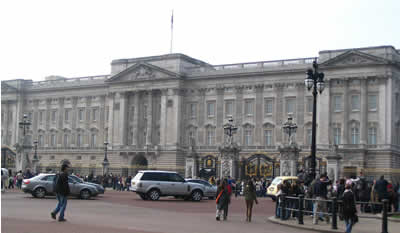 13.
Buckingham Palace provided an unlikely operating theatre for King Edward VII in
1902. Suffering from peritonitis and close to death, he was operated on in a room
overlooking the garden. The surgery proved a success, and King Edward VII was
crowned at Westminster Abbey in August that year.
13.
Buckingham Palace provided an unlikely operating theatre for King Edward VII in
1902. Suffering from peritonitis and close to death, he was operated on in a room
overlooking the garden. The surgery proved a success, and King Edward VII was
crowned at Westminster Abbey in August that year.
14. There are 1,514 doors and 760 windows in Buckingham Palace. All windows are cleaned every six weeks to keep them clean.
15. Electricity was first installed in the Ball Room of Buckingham Palace in 1883, and between 1883 and 1887 electricity was extended throughout the Palace. Today there are over 40,000 light bulbs in the Palace.
16. Some rooms at Buckingham Palace have a Chinese theme. That is because they feature furniture and décor which were originally based in the Prince Regent's oriental-style Royal Pavilion at Brighton (later sold by Queen Victoria to fund building work at Buckingham Palace).
17. Buckingham Palace's garden covers 40 acres, and includes a helicopter landing area, a lake, and a tennis court (where King George VI often played tennis with Fred Perry). It is home to 30 different species of bird and more than 350 different wild flowers, some extremely rare. As well as being the venue for summer garden parties, it has been the setting for a charity tennis competition (2000), pop and classical music concerts (2002) and a children's party featuring a host of characters from children's books (2006).
18. The only monarch to be born and die at Buckingham Palace was Edward VII (born 1841, died 1910). William IV was also born at Buckingham House. The Queen gave birth to Prince Charles and Prince Andrew at Buckingham Palace. Notice of Royal births and deaths is attached to the railings at Buckingham Palace for members of the public to read. This custom is still followed - even in the age of mass media, when Royal births and deaths are also announced on the Royal web site.
19. In 1914 suffragettes seeking votes for women took their campaign to Buckingham Palace. Two women chained themselves to the Palace railings, whilst others attempted to storm the Palace to deliver their 'Votes for Women' petition.
20. During the Second World War, Buckingham Palace suffered nine direct bomb hits. On several occasions King George VI and Queen Elizabeth were in the Palace and narrowly escaped being killed. One person did die during the wartime bombing: PC Steve Robertson, a policeman on duty at the Palace, was killed by flying debris on 8 March 1941 when the north side of the Palace was wrecked. A plaque inside the garden commemorates his heroism.
21. Environmental issues are a major concern in the running of Buckingham Palace. A Combined Heat and Power unit (CHP) helps to cut energy consumption; LED lights reduce electricity use; and double-glazed skylights reduce energy loss. In the garden, 99% of green waste is recycled on site.
22.
Four Royal babies - The Prince of Wales, The Princess Royal, The Duke of York
and Prince William - were christened by the Archbishop of Canterbury in the Music
Room of Buckingham Palace.
23. A flag always flies above Buckingham Palace. When The Queen is in residence,
the Royal Standard flies. When the Sovereign is not present, the Union Flag flies
instead. A flag serjeant has the role of raising and lowering the right flag as
The Queen arrives at or departs from the Palace.
24. Buckingham Palace has its own chapel, post office, swimming pool, staff cafeteria, doctor's surgery and cinema.
25. Although Buckingham Palace is well known, it still has a postcode: SW1A 1AA. It is the only building to have this postcode although the House of Commons has a similar one - SW1A 0AA.
26. There are more than 350 clocks and watches in Buckingham Palace, one of the largest collections of working clocks anywhere. Two full-time horological conservators wind them up every week and keep them in good working order.
27. Changing the Guard takes place on the forecourt of Buckingham Palace at 11.30am (on alternate days during autumn and winter). In this ceremony the soldiers who have been on duty at Buckingham Palace and St. James's Palace are relieved by the 'New Guard'. A military band plays music, which ranges from military marches to Abba's greatest hits. On Royal birthdays the band plays 'Happy Birthday'.
28. One regular ritual which most tourists do not see is the daily 'dragging' of the gravel on the forecourt of Buckingham Palace. It is cleaned and combed using mechanical equipment first thing daily - even on Christmas Day. Later in the day two more inspections take place just in case there is any rubbish to clear away. This helps to ensure that the forecourt always looks spick and span.
29. The largest room in the Palace is the Ballroom, where Investitures and State banquets take place today. It is 36.6m long, 18m wide and 13.5m high. It was opened in 1856 with a ball to celebrate the end of the Crimean War.
30. Crowds often gather around Buckingham Palace for occasions of national celebration. At the end of World War II, hundreds of thousands cheered King George VI and Winston Churchill on the balcony. To mark The Queen's Golden Jubilee in 2002, over one million people crowded into the area in front of the Palace and down the Mall.
31. The 1st Buckingham Palace Guide Company was formed in 1937 when Princess Elizabeth enrolled as a Girl Guide. The pack included some 20 Guides and fourteen Brownies: children of Royal Household members and Palace employees. They made a summerhouse in the garden their headquarters but, with the outbreak of the Second World War, the Company was closed down.
32. Dress codes at Buckingham Palace have changed greatly over two centuries. In 1924 Labour Prime Minister Ramsay MacDonald was the first man to be received by a monarch inside Buckingham Palace wearing a lounge suit, but, this was a one-off. Evening court dress remained obligatory until the Second World War. Today there is no official dress code. Most men invited to Buckingham Palace in the daytime choose to wear service uniform or lounge suits.
33. Visiting heads of state occupy a suite of rooms at the Palace known as the Belgian suite, on the ground floor of the North-facing garden front. These rooms were first decorated for Prince Albert's uncle Léopold I, first King of the Belgians. King Edward VIII also lived in these rooms during his short reign.
34. Buckingham Palace is not the private property of the Queen as an individual, to dispose of as she wishes. Like Windsor Castle and the Palace of Holyroodhouse, Buckingham Palace is held by The Queen as Sovereign.
35. John Nash, the architect responsible for remodelling many of today's Buckingham Palace interiors, also built the Royal Mews, All Soul's Church Langham Place, Regent Street and Carlton House Terrace, and redesigned the Haymarket Theatre.
36. Hundreds of distinguished historic figures have visited Buckingham Palace since it became the Sovereign's London residence. They have included a seven-year-old Wolfgang Amadeus Mozart (when it was still Buckingham House); Felix Mendelssohn; Johann Strauss the Younger; Charles Dickens; Alfred Lord Tennyson; American Presidents including Woodrow Wilson and JF Kennedy; Mahatma Gandhi (who wore a loin cloth and sandals to tea with King George V); first man on the moon Neil Armstrong; actor Laurence Olivier; and Nelson Mandela.
37. Buckingham Palace is not only The Queen's London home: The Duke of Edinburgh, The Duke of York, The Earl and Countess of Wessex, The Princess Royal and Princess Alexandra also have private offices and apartments located within the Palace.
39. More than 50,000 people visit the Palace each year as The Queen's guests at banquets, lunches, dinners, receptions and garden parties. The Buckingham Palace kitchen is able to serve a sit-down meal to as many as 600 people at a time. Since 1993, the State Rooms of the Palace have also been open to members of the public to visit during August and September, while The Queen is not in residence.
40. The Queen's regular audiences with the British Prime Minister traditionally take place at Buckingham Palace in The Queen's Audience Room. During the war, King George VI's audiences with Winston Churchill were less formal - the two helped themselves to food from a buffet before sitting down to talk in privacy.
For more information please visit the official buckingham Palace site:
www.royal.gov.uk



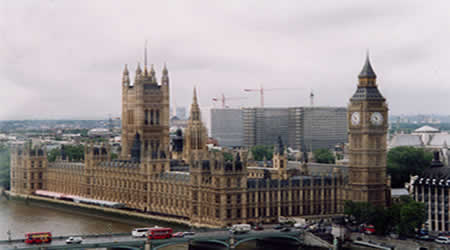
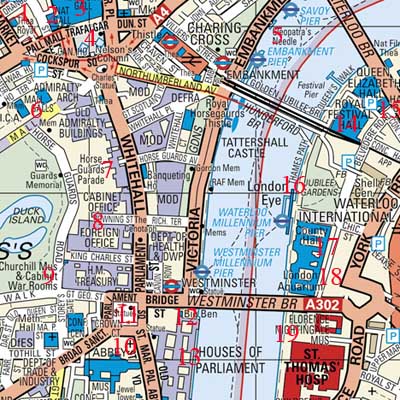

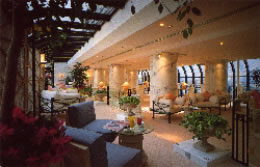
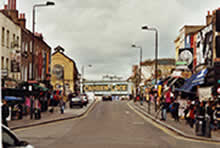
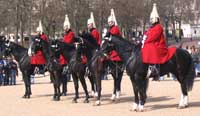

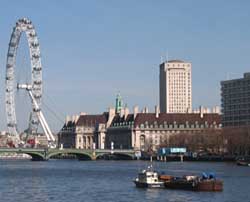
.jpg)
